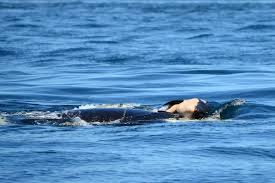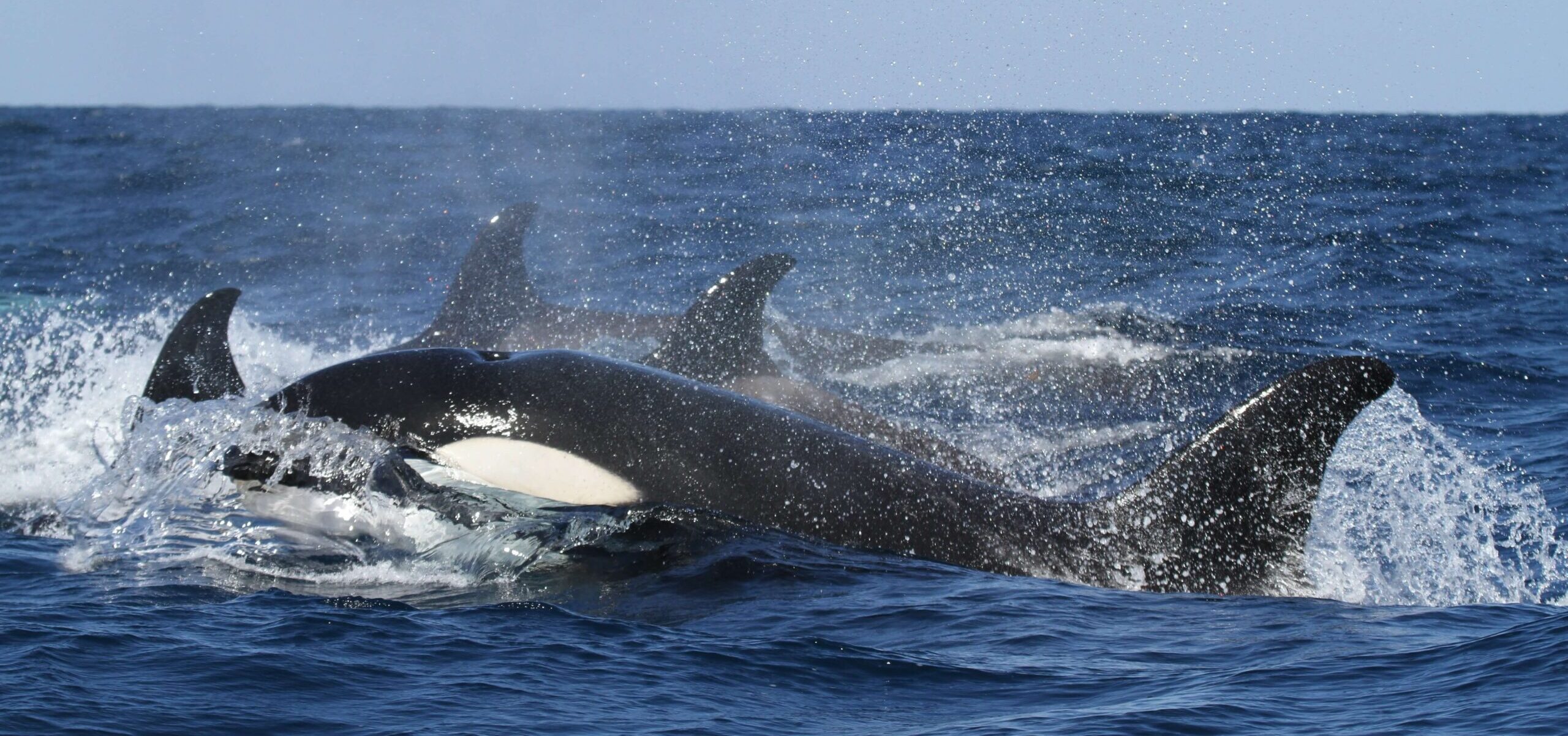The Southern Resident Killer Whales are the only fish-eating orcas in the lower 48. They are named the Southern Residents, or officially the SRKWs, because a large part of the year they hang out in the Puget Sound and just off the coast of Washington and Oregon.
There are just 74 alive as of July 2021.
What do the four Lower Snake River Dams have to do with the critically endangered Southern Resident Orcas?
Everything, when it comes to the whales’ survival. Their population is in decline because of lack of food. Chinook salmon make up 80% of the orcas’ diet.

Why are salmon produced by the Columbia & Snake Rivers so important to the orcas’ survival? The answer is that the whales evolved eating plentiful Chinook salmon from these rivers, and are dependent on them.
The Snake/Columbia Basin was one of the largest, if not the largest, salmon producing river system in the world, generating by some estimates 16 to 30 million salmon each year. But human activity and the dams specifically, have decimated salmon runs by blocking both juvenile salmon migration out to the ocean, as well as adult salmon migration back from the ocean to their spawning grounds in the Snake River.
The dams cause fewer and fewer wild fish to return every year and landed all four Snake River salmon runs on the Endangered Species list by 2000. Without this once plentiful salmon supply, the Southern Resident orcas landed on the list in 2005 as critically endangered.
Even now, the Snake/Columbia watershed is important to the orcas, since more than 50% of the salmon that the orcas’ feed on comes out of the watershed. NOAA’s Southern Resident orcas satellite tagging data for 2015 and 2016, show the orcas focusing on the coastal areas near the mouth of the Columbia River. See 2015 Southern Resident Killer Whale Satellite Tagging and 2016 Southern Resident Willer Whale Satellite Tagging.
Thanks to the Center for Whale Research, we have a clear understanding of each orcas condition and migration as they struggle for survival. To learn more about the relationship between snake river salmon and orcas, visit their website.
Do we want the Southern Resident orcas, the beloved icons of the Pacific Northwest, to be around to inspire interest, curiosity and awe and wonder in our grandchildren, or their grandchildren? If we do, then we must increase the orcas’ food supply now—not next year, not in 10 years, but now.

In 2018 Orca mother Tehlequah carried her dead calf for over two weeks around the Puget Sound. Her grief was felt all over the country and showcased the suffering of this population that has failed to produce viable offspring in the past few years.


